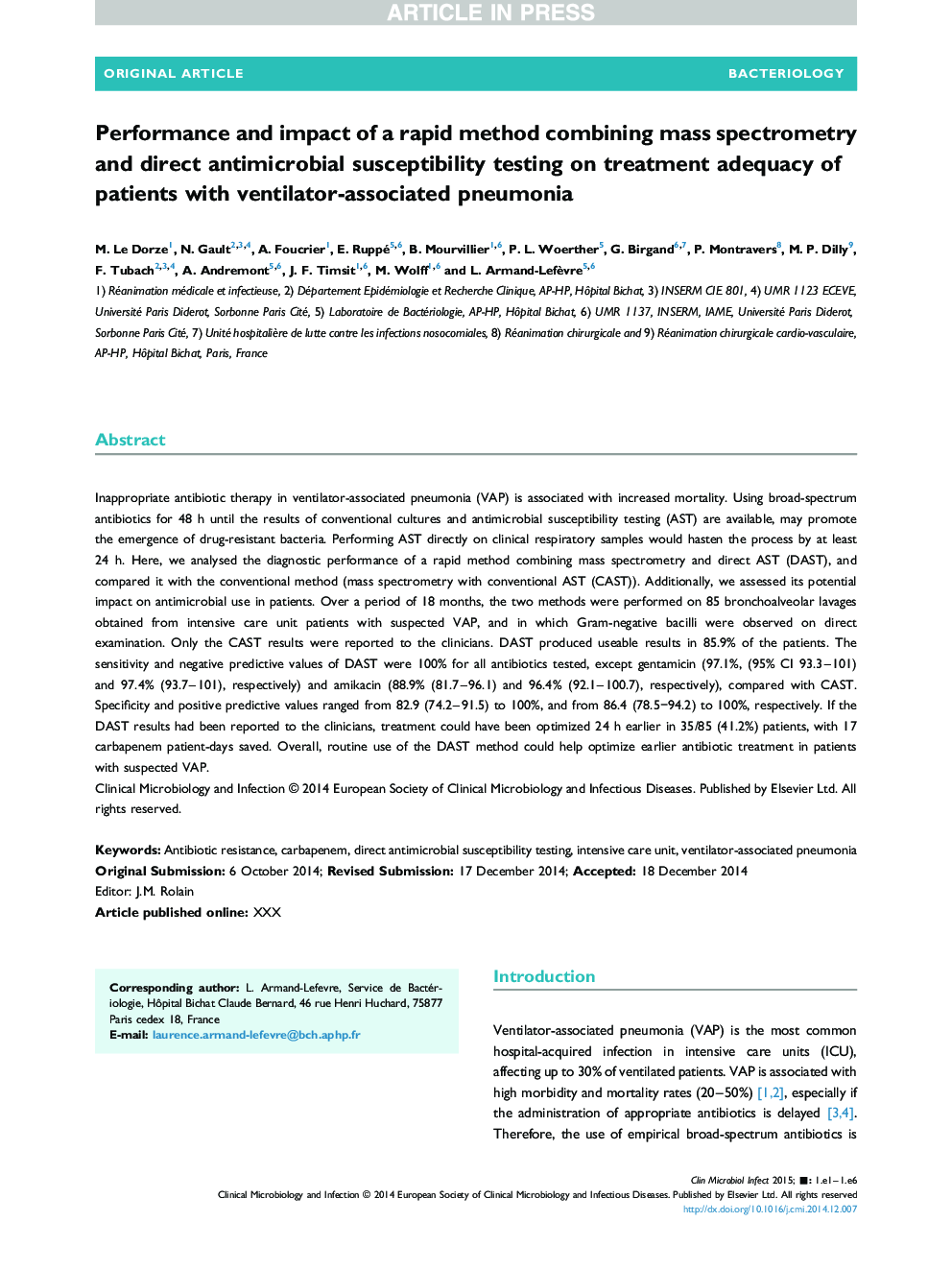| کد مقاله | کد نشریه | سال انتشار | مقاله انگلیسی | نسخه تمام متن |
|---|---|---|---|---|
| 6129635 | 1222162 | 2015 | 6 صفحه PDF | دانلود رایگان |
عنوان انگلیسی مقاله ISI
Performance and impact of a rapid method combining mass spectrometry and direct antimicrobial susceptibility testing on treatment adequacy of patients with ventilator-associated pneumonia
ترجمه فارسی عنوان
عملکرد و تأثیر یک روش سریع ترکیب اسپکترومتری جرم و آزمایش مستقیم حساسیت ضد میکروبی بر کفایت درمان بیماران مبتلا به پنومونی مرتبط با تهویه
دانلود مقاله + سفارش ترجمه
دانلود مقاله ISI انگلیسی
رایگان برای ایرانیان
کلمات کلیدی
مقاومت آنتی بیوتیکی، کرباپنم آزمایش مستقیم حساسیت ضد میکروبی، واحد مراقبت های ویژه، پنومونی مرتبط با تهویه
موضوعات مرتبط
علوم زیستی و بیوفناوری
ایمنی شناسی و میکروب شناسی
میکروب شناسی
چکیده انگلیسی
Inappropriate antibiotic therapy in ventilator-associated pneumonia (VAP) is associated with increased mortality. Using broad-spectrum antibiotics for 48Â h until the results of conventional cultures and antimicrobial susceptibility testing (AST) are available, may promote the emergence of drug-resistant bacteria. Performing AST directly on clinical respiratory samples would hasten the process by at least 24Â h. Here, we analysed the diagnostic performance of a rapid method combining mass spectrometry and direct AST (DAST), and compared it with the conventional method (mass spectrometry with conventional AST (CAST)). Additionally, we assessed its potential impact on antimicrobial use in patients. Over a period of 18 months, the two methods were performed on 85 bronchoalveolar lavages obtained from intensive care unit patients with suspected VAP, and in which Gram-negative bacilli were observed on direct examination. Only the CAST results were reported to the clinicians. DAST produced useable results in 85.9% of the patients. The sensitivity and negative predictive values of DAST were 100% for all antibiotics tested, except gentamicin (97.1%, (95% CI 93.3-101) and 97.4% (93.7-101), respectively) and amikacin (88.9% (81.7-96.1) and 96.4% (92.1-100.7), respectively), compared with CAST. Specificity and positive predictive values ranged from 82.9 (74.2-91.5) to 100%, and from 86.4 (78.5â94.2) to 100%, respectively. If the DAST results had been reported to the clinicians, treatment could have been optimized 24Â h earlier in 35/85 (41.2%) patients, with 17 carbapenem patient-days saved. Overall, routine use of the DAST method could help optimize earlier antibiotic treatment in patients with suspected VAP.
ناشر
Database: Elsevier - ScienceDirect (ساینس دایرکت)
Journal: Clinical Microbiology and Infection - Volume 21, Issue 5, May 2015, Pages 468.e1-468.e6
Journal: Clinical Microbiology and Infection - Volume 21, Issue 5, May 2015, Pages 468.e1-468.e6
نویسندگان
M. Le Dorze, N. Gault, A. Foucrier, E. Ruppé, B. Mourvillier, P.L. Woerther, G. Birgand, P. Montravers, M.P. Dilly, F. Tubach, A. Andremont, J.F. Timsit, M. Wolff, L. Armand-Lefèvre,
